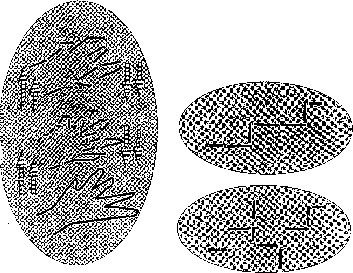




Next: Generic Look-up Table
Up: A Hierarchical Scheme
Previous: 6.5.1 Multigrid Method with
Line processes [Marroquin:84a] are binary
variables arranged in
a two-dimensional array. An active line process ( ) between two
neighboring pixels indicates that there is a physical discontinuity between
them. Activation is, therefore, based on a measure of the difference in
pixel properties but must also take into account the presence of other LPs.
The idea is that continuous nonintersecting chains of LPs are preferred to
discontinuous and intersecting ones, as it is shown in
Figure 6.23.
) between two
neighboring pixels indicates that there is a physical discontinuity between
them. Activation is, therefore, based on a measure of the difference in
pixel properties but must also take into account the presence of other LPs.
The idea is that continuous nonintersecting chains of LPs are preferred to
discontinuous and intersecting ones, as it is shown in
Figure 6.23.

Figure: The Multiscale Interaction Favors the Formation of Continuous
Chains of Line Processes. The figure on the left sketches the multiscale
interaction of LPs that, together with the local interaction at the
same scale, favors the formation of continuous chains of Line
Processes (LP caused by ``noise'' are filtered out at the coarse
scales, the LPs caused by real discontinuities remain and act on the
finer scales, see Figure 6.24). On the right,
we show a favored (top) and a penalized (bottom) configuration. On
the left, we see coarsest scale with increasing resolution in two
lower outlines of hand.
We propose to combine the surface reconstruction and discontinuity detection
phases in time and scale space. To do this, we introduce line
processes at different scales, ``connect'' them to neighboring depth
processes (henceforth DPs) at the same scale and to neighboring LPs on the
finer and coarser scale. The reconstruction assigns equal priority to the
two process types.
This scheme not only greatly improves convergence
speed (the typical multigrid effect) but also produces a more
consistent reconstruction of the piecewise smooth surface at the
different scales.
Guy Robinson
Wed Mar 1 10:19:35 EST 1995
 ) between two
neighboring pixels indicates that there is a physical discontinuity between
them. Activation is, therefore, based on a measure of the difference in
pixel properties but must also take into account the presence of other LPs.
The idea is that continuous nonintersecting chains of LPs are preferred to
discontinuous and intersecting ones, as it is shown in
Figure 6.23.
) between two
neighboring pixels indicates that there is a physical discontinuity between
them. Activation is, therefore, based on a measure of the difference in
pixel properties but must also take into account the presence of other LPs.
The idea is that continuous nonintersecting chains of LPs are preferred to
discontinuous and intersecting ones, as it is shown in
Figure 6.23.





